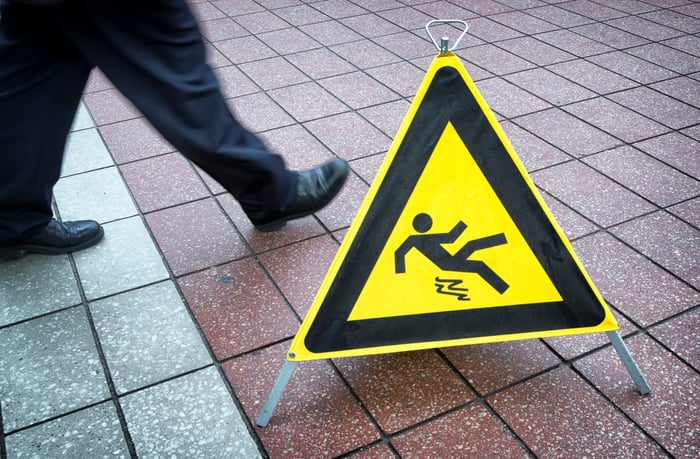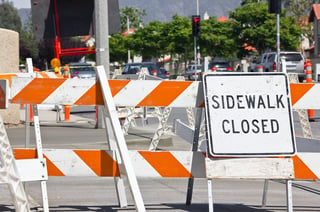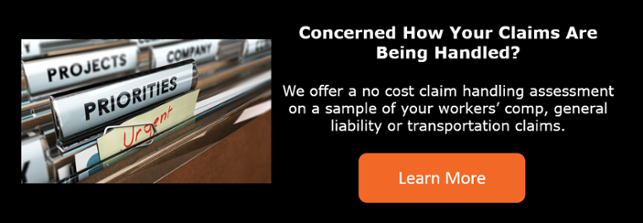 Slip and fall claims are not always clear-cut. Sometimes they can become complicated depending upon how and where they occurred. It’s important for the adjuster to gather all the facts during the claim handling process to determine the best way to proceed.
Slip and fall claims are not always clear-cut. Sometimes they can become complicated depending upon how and where they occurred. It’s important for the adjuster to gather all the facts during the claim handling process to determine the best way to proceed.
What is the Role of Both Parties?
The first step is to understand the role of both the claimant and insured involved in the accident. What role did the claimant play in the accident? Was the claimant an employee, visitor, or trespasser?
What role did the insured play?
Once the adjuster has a clear understanding of the role of all parties involved in the accident is when the seven factors to consider come into play.
What are the circumstances surrounding the injury?
Just because someone gets injured on a person’s property doesn’t mean that the insured is automatically accountable. The claimant has a responsibility in the accident as well as the insured. Consider these seven factors when defending a slip and fall:
#1 Claimant Status & Duty Owed
If an injury occurs on someone’s property, it is important to identify the status of the claimant since it may affect the insured’s obligation to the claimant. There are three types of claimants:
-
Invitee: someone who is on the premises for the benefit of a business or is a welcome visitor of the insured. Invitees are owed the highest duty of care.
-
Licensee: a person who chooses to come on the property and has permission to do so. Licensees are owed a lesser duty of care.
-
Trespasser: a party who is not welcome on the property. There is no duty owed to a claimant on a premise without permission from the owner.
Example: Brad is walking home and decides to take a shortcut by cutting through a neighbor’s yard. He does not know the neighbor. Brad steps in a hole in the yard and twists his ankle. Brad presents a claim against the homeowner but he is denied as he was not on the property with the owner’s permission.
#2 Notice
Did the insured have notice of the defect? There are two types of notice:
-
Actual notice: the insured had direct knowledge of the defect.
-
Constructive notice: the insured should have had reasonable knowledge of the defect. Sometimes lack of notice can be a defense to the insured.
Example: A customer walking through a grocery store accidentally spills some of their coffee on the floor and does not tell anyone about the incident. Tina walks by a few moments later and slips in the puddle. The store may argue they had no notice, either actual or constructive, of the coffee spill and cannot be held liable.
#3 Open & Obvious
A great first line of defense is the open and obvious doctrine. While premises owners have a duty to protect invitees, there are still defenses allowed. The open and obvious defense essentially says that a reasonable person should have noticed the defect and steered clear of it to avoid injury.
Example: A parking lot that is otherwise free of snow has a patch of snow and ice that is clearly visible. George walks over the icy patch and slips and falls. A reasonable person would have seen the obvious hazard and avoided it.
#4 Minor Defects
In many jurisdictions, minor defects are not unlawful. This is sometimes known as the “de minimis” defense, meaning that a minor defect is so miniscule it would not have posed a safety hazard.
Example: Stephanie is walking on a public sidewalk. She trips and falls over a ½ inch height difference between two adjoining sidewalk slabs. Stephanie’s claim is denied as the defect was so minor, it was not a safety hazard and did not warrant correction.
#5 Assumption of Risk
 Assumption of Risk means a claimant has knowingly and voluntarily entered into a potentially hazardous situation.
Assumption of Risk means a claimant has knowingly and voluntarily entered into a potentially hazardous situation.
Example: Alex is walking down the street past a building that is under construction. There are tools and materials scattered about the sidewalk. Rather than go around the items, Alex decides to step over them. As a result, his foot gets caught on a plank of wood and he falls injuring himself. Alex’s claim is denied because he could have gone around the materials but saw them and decided to walk over them anyway.
#6 Reasonably Foreseeable
A risk of injury is reasonably foreseeable if a party should have known to expect certain hazards to occur.
Example: Mark owns a convenience store that has been robbed numerous times and he has not taken any measures to increase the safety of his store. One evening, a robbery occurs and the perpetrator also robs and assaults a customer. Mark should have reasonably foreseen the crime and taken measures to increase his store’s safety. He may be liable even though the crime was caused by a third party.
#7 Identify Other Third Parties
It is important to identify all parties to a claim to determine who may be liable. Sometimes there may be other parties involved that may ultimately be found responsible for the claim.
Example: Harry, the insured, reported that a neighbor slipped and fell on his partially shoveled icy and snowy sidewalk. The claim examiner should ask Harry if he shoveled the walk himself or if he hired someone to do it for him. In this case, Harry hired a professional snow removal company to remove the snow who could possibly be held liable for not properly cleaning the sidewalk.
Conclusion
During the claim handling process, you need to understand how the injured came to be on the insured’s property. Were they invited or were they on the property without permission? Did the owner know the defect existed prior to the injury? Should the injured have known about the defect and tried to avoid it? Are any third parties involved?
Consider these 7 factors during the claim handling process to obtain all the relevant data and subsequently be able to proceed with all the facts, resulting in a thorough and sound claim investigation.





